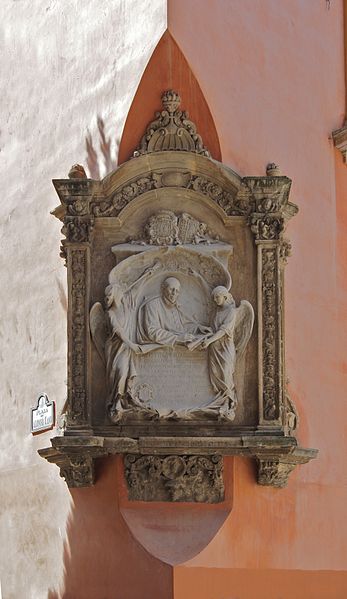Francisco Suárez, was a Spanish Jesuit priest, philosopher and theologian, one of the leading figures of the School of Salamanca movement. His work is considered a turning point in the history of second scholasticism, marking the transition from its Renaissance to its Baroque phases. According to Christopher Shields and Daniel Schwartz, "figures as distinct from one another in place, time, and philosophical orientation as Leibniz, Grotius, Pufendorf, Schopenhauer and Heidegger, all found reason to cite him as a source of inspiration and influence."
Francisco Suárez
Monument in Granada, Spain, where he was born
Monument of Francisco Suárez in Granada
The School of Salamanca is an intellectual movement of 16th-century and 17th-century Iberian Scholastic theologians rooted in the intellectual and pedagogical work of Francisco de Vitoria. From the beginning of the 16th the traditional Catholic conception of man and of his relation to God and to the world had been assaulted by the rise of humanism, by the Protestant Reformation and by the new geographical discoveries and their consequences. These new problems were addressed by the School of Salamanca. The name is derived from the University of Salamanca, where de Vitoria and other members of the school were based.
University of Salamanca
17th century classroom at the University of Salamanca
Francisco Suárez
Diego de Covarrubias






